Complimentary worldwide shipping on orders over $400 · No import tariffs for most countries
Complimentary worldwide shipping on orders over $400 · No import tariffs for most countries
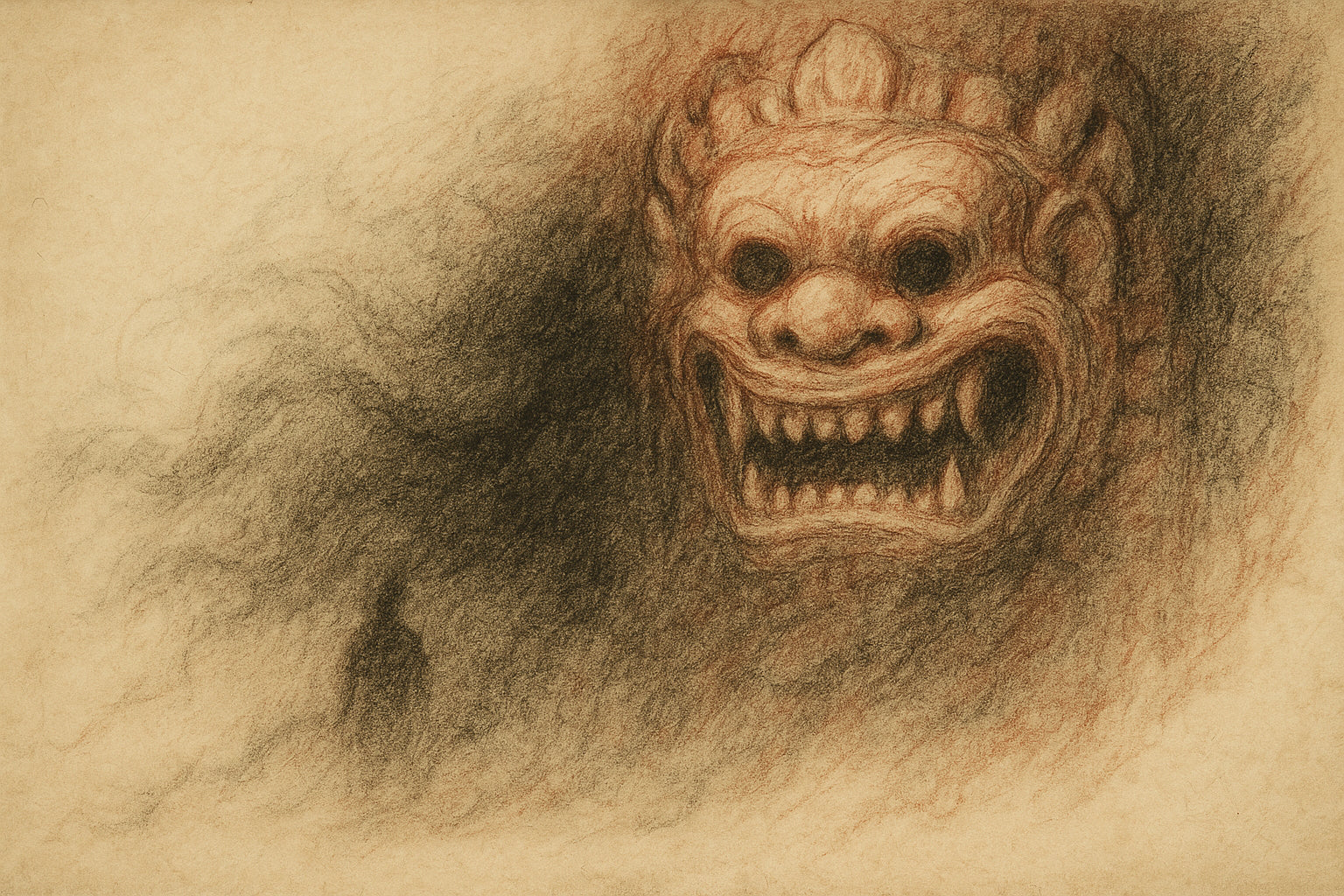
Shadow Behind the Gate
“The mouth above the gate does not speak. It remembers.”
There is a face above the gate.
Its teeth are wide.
Its eyes are hollow.
Its mouth has never closed.
No one remembers when it was carved—
only that it waits.
Some call it Kala, the Eater of Time.
Some call it Guardian.
The oldest monks speak no name at all.
They pass beneath with bowed heads and sealed lips,
for to name the face
is to summon the silence that follows.
But once—
before gates were stone,
before lintels bore that devouring grin—
the face was not a carving.
It was a hunger.
And that hunger had a name
only the earth now remembers.
—
They say there was once a gate without guardians.
No lion. No nāga.
No flame-eyed god crouched in the cornice.
Only wind.
Only footprints.
Only the soft passing of spirits.
In those early days,
the people came with songs and quiet offerings.
They lit rice-lanterns.
They laid their sorrows beneath banyan leaves.
The temple was young.
The world still being sung into shape.
Stone had not yet remembered death.
But something waited on the other side—
not cruel,
not kind—
only vast.
One day, a child came to the gate.
He had wandered far from his village,
drawn by the scent of jasmine and smoke.
The elders had warned him:
Do not pass the gate unless you are ready
to leave something behind.
But children do not know what they carry.
He stepped beneath the arch
and vanished into the hush.
The priests found only his shadow—
pressed like a leaf into the stone.
It had teeth.
And it was smiling.
—
The people wept.
The priests fasted.
The mountain gave no answer.
Then came the dream.
The temple itself whispered:
Give it a face,
or it will take yours.

So they carved the mouth.
They did not know what eyes it should wear—
so they hollowed them.
They did not know what name it should bear—
so they gave it none.
They carved it from memory, not from stone:
a memory of hunger,
a mouth that watches,
a silence that listens for footsteps.
When it was finished,
they sealed the gate with an offering—
blood,
breath,
and a bell that would never ring.
—
Now, the face watches.
Every time you pass beneath it,
it counts what you carry.
Every time you linger,
it leans closer.
Those who cross with pride—
who enter with greed—
find their dreams chewed hollow.
Not by punishment.
By remembrance.
For the face does not guard the temple.
It guards the threshold.
It asks,
not with words
but with teeth:
Have you forgotten
what you came to lose?
—
Once, long ago,
a dancer brought no offering.
No coin.
No candle.
No name.
She bowed beneath the gate,
tears woven in her hair,
and sang a single note—
a note no one had ever heard,
though every being somehow remembered.
The mouth above the gate did not move.
But the wind stilled.
The birds fell silent.
And for one sacred moment,
the stone seemed to close its eyes.
—
Now, in ruins thick with roots,
the face remains.
It does not speak.
It does not blink.
Yet some say it breathes
when no one is looking.
And some say it waits for you.
Because every threshold remembers.
And behind every gate,
there is a shadow.
—
Walk slowly.
Bow lightly.
And if the mouth seems to smile—
do not answer.
Also in Library
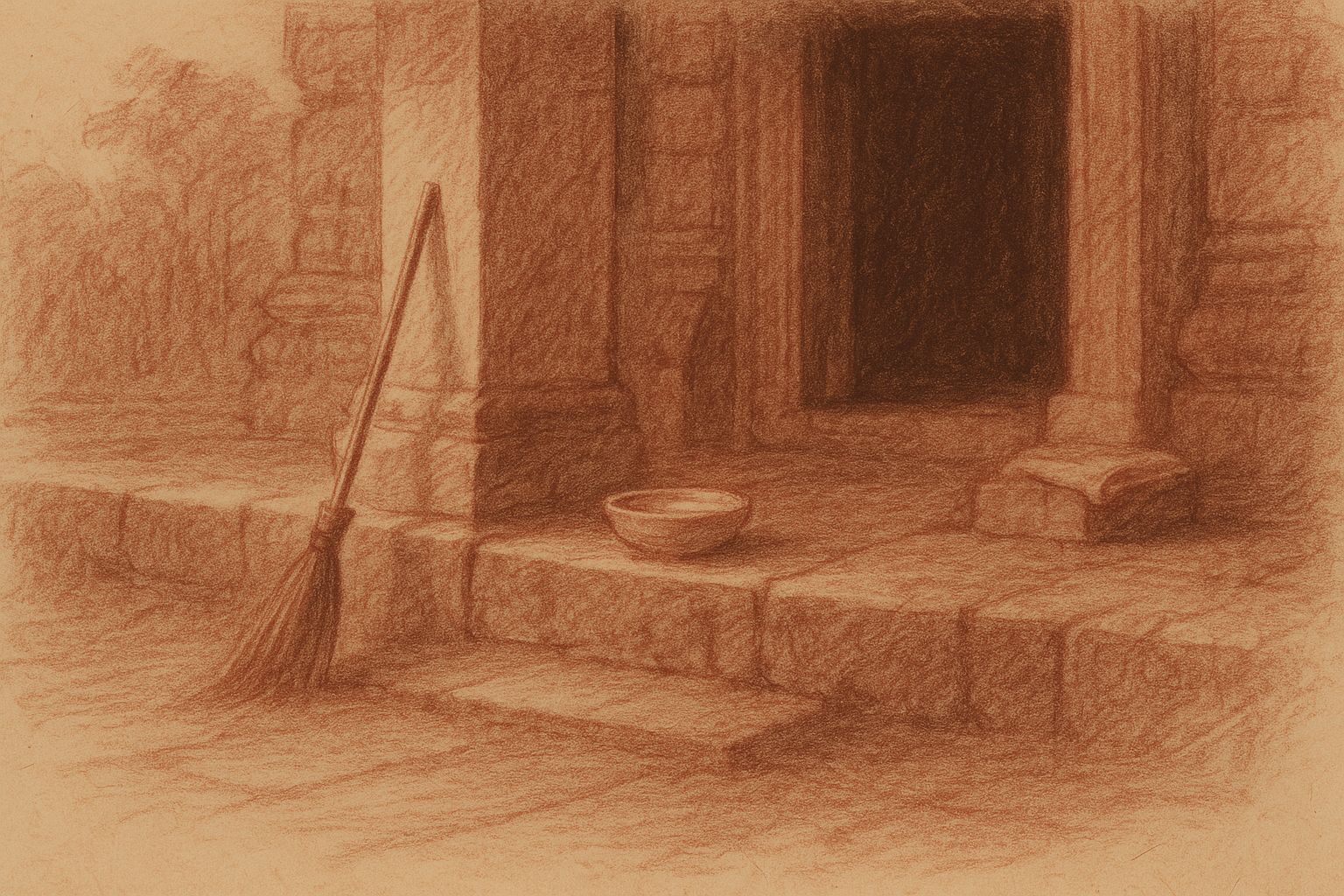
Those Who Keep the Way Open — On the Quiet Guardians of Angkor’s Thresholds
3 min read
Quiet gestures shape the way into Angkor — a swept stone, a refilled bowl, a hand steadying a guardian lion. This essay reflects on the unseen custodians whose daily care keeps the thresholds open, revealing how sacredness endures not through stone alone, but through those who tend its meaning.
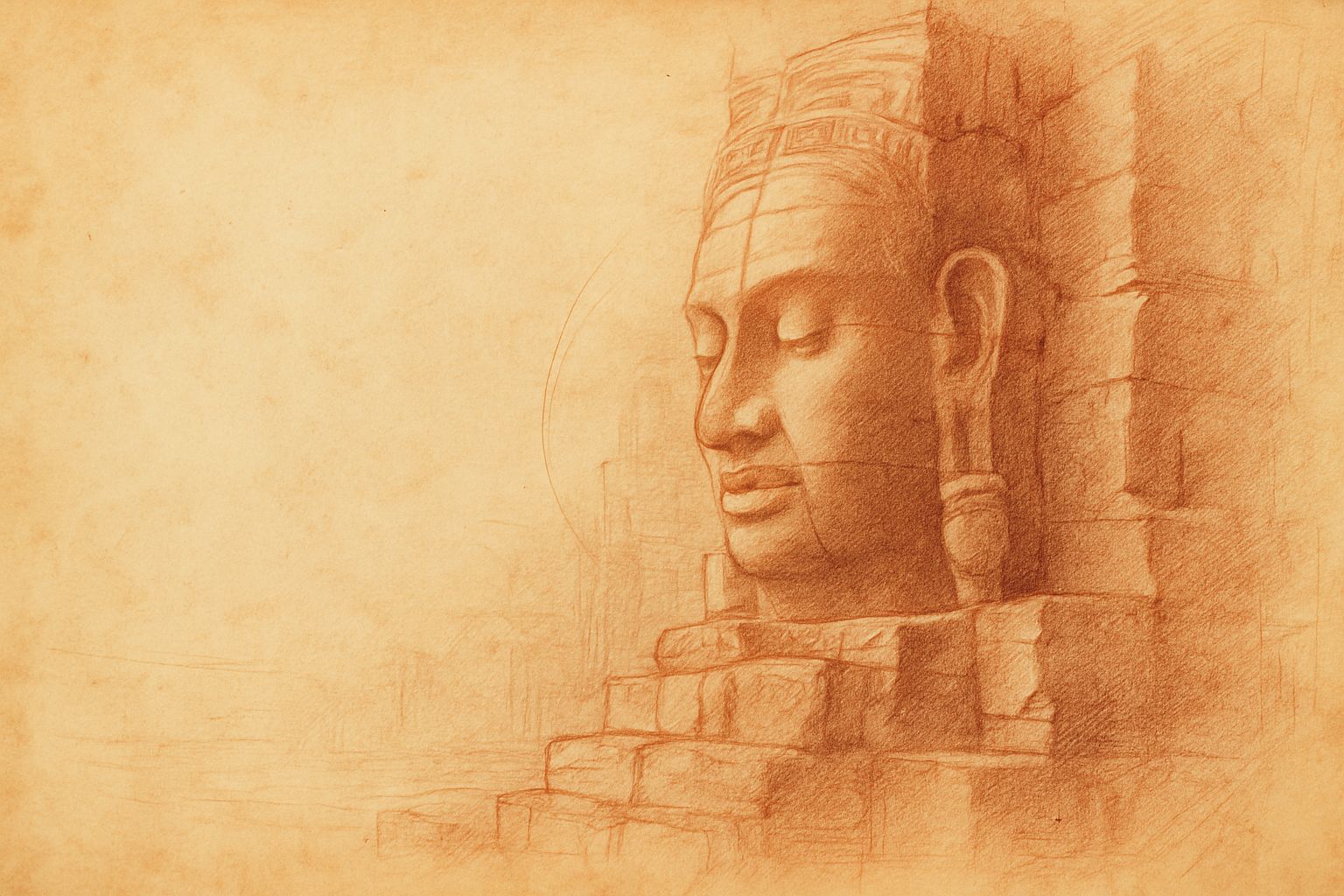
Multiplicity and Mercy — The Face Towers of Jayavarman VII
5 min read
A new vision of kingship rises at the Bayon: serene faces turned to every horizon, shaping a world where authority is expressed as care. Moving through the terraces, one enters a field of steady, compassionate presence — a landscape where stone, light, and time teach through quiet attention.
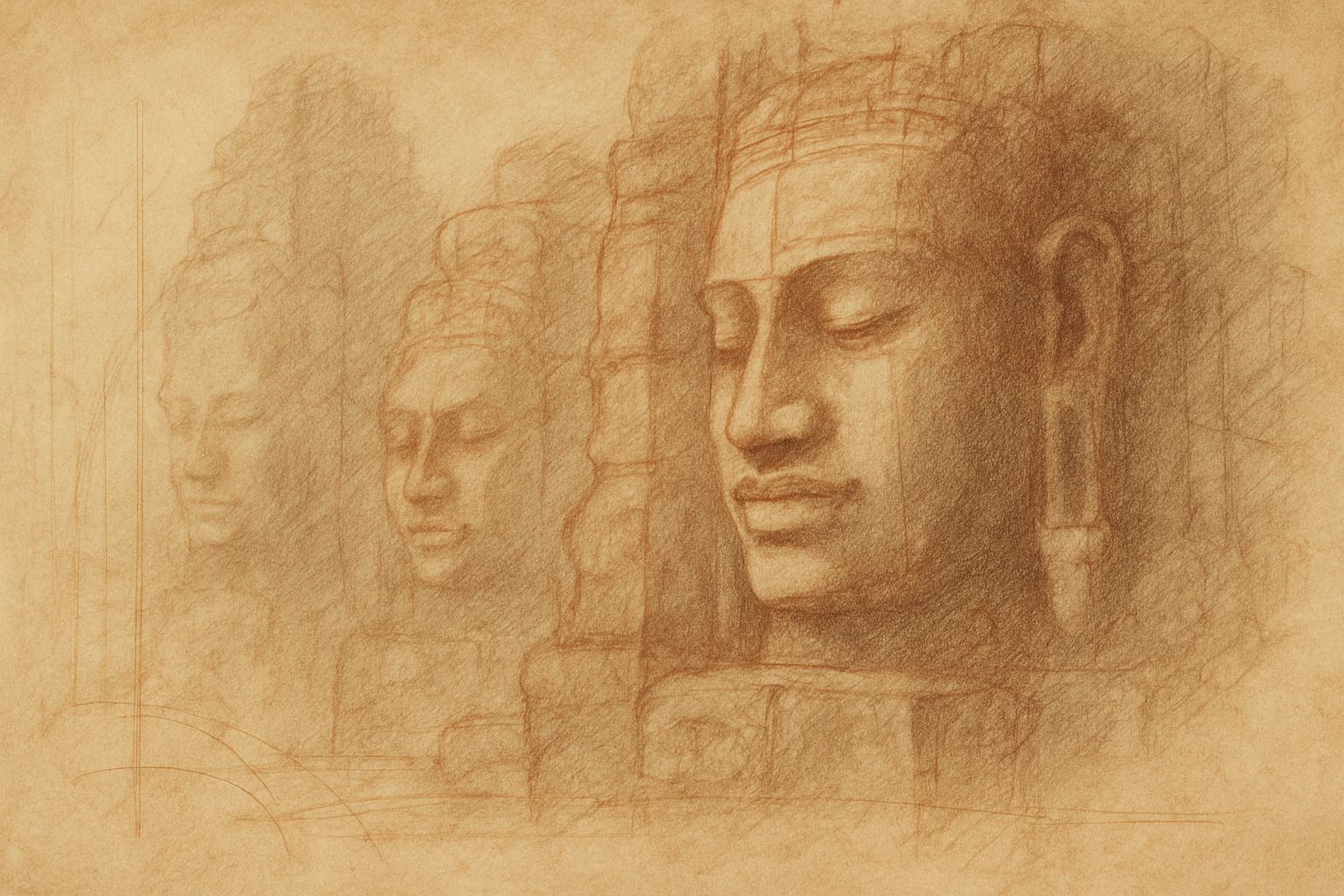
Stone That Dreams
4 min read
Bayon wakes like a mind emerging from shadow. Its many faces shift with light and breath, teaching that perception—and the self—is never singular. In walking this forest of towers, the pilgrim discovers a quiet multiplicity within, held together by a calm that feels both ancient and newly understood.
Original artist's print on bamboo paper.
Image 7.25 x 9.2 inches, 18.4 x 23.4 cm
Hand-signed and numbered on border recto.
Edition 3/25
This is an exceptional, individually crafted, museum-quality archival print on fine art paper.
It is accompanied by a unique certificate of authenticity to certify and preserve the provenance of your artwork.
Other print sizes and fine art framing services are available on request.
We look at the world and see what we have learned to believe is there.
We have been conditioned to expect…
But, as photographers,
we must learn to relax our beliefs.
Join My Studio Journal
Receive occasional letters from my studio in Siem Reap—offering a glimpse into my creative process, early access to new fine art prints, field notes from the temples of Angkor, exhibition announcements, and reflections on beauty, impermanence, and the spirit of place.
No noise. No clutter. Just quiet inspiration, delivered gently.
Subscribe and stay connected to the unfolding story.
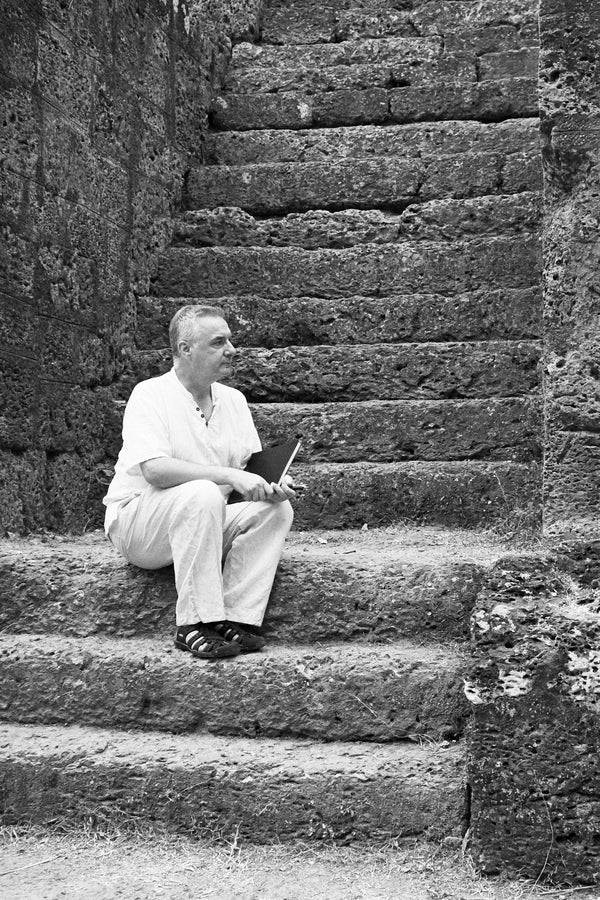
Join My Studio Journal
Receive occasional letters from my studio in Siem Reap—offering a glimpse into my creative process, early access to new fine art prints, field notes from the temples of Angkor, exhibition announcements, and reflections on beauty, impermanence, and the spirit of place.
No noise. No clutter. Just quiet inspiration, delivered gently.
Subscribe and stay connected to the unfolding story.

